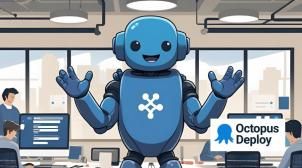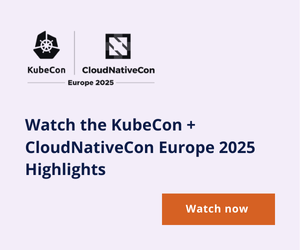-
Introducing the Anaconda Community Channel: Expanding Your Open Source Arsenal While Maintaining Enterprise Control
Introducing the Anaconda Community Channel – Unlock access to over 16,000 additional open-source packages with the new Community Channel in the Anaconda AI Platform. Designed for enterprises, it offers seamless compatibility with Anaconda’s trusted distribution, all while maintaining governance, security, and compliance. Empower developers, reduce admin overhead, and accelerate innovation—without compromising control. Now available for Business tier customers.
-
Traditional Security Measures vs. Witness AI To Improve Network-Based Observability
See how Witness AI’s network-based observability beats traditional security for enterprise AI.
-
Edera's Approach To Container Isolation That Focuses On Security And Efficiency
Discover how Edera is redefining container isolation with a hypervisor-based approach that blends security and efficiency without hardware virtualization.
-
7 Reasons Why Businesses Need To Secure AI-Driven Applications With Mend AI
Why securing AI applications is important for businesses and how Mend AI can help protect against emerging AI threats.
-
SINGAPORE’S LARGEST BANK MOVES TO OPEN SOURCE WITH MARIADB
Discover how DBS Bank, Southeast Asia's largest bank, successfully migrated mission-critical applications from Oracle to MariaDB, achieving 30-70% cost savings, enhanced flexibility with microservices, real-time data streaming, and robust compliance for its demanding financial services operations.
-
GitOps vs. DevOps: Key Differences Explained
GitOps and DevOps are often seen as interchangeable, but they serve distinct purposes within the software delivery lifecycle. This article breaks down their differences, tools, workflows, and where they overlap. Learn how GitOps focuses on infrastructure automation using Git as the source of truth, while DevOps represents a broader cultural shift aimed at collaboration and continuous delivery. Discover how combining both approaches can streamline development, enforce consistency, and boost deployment reliability.
-
The Shadow AI Crisis: Why Enterprise Governance Can’t Wait Any Longer
The Shadow AI Crisis: Why Enterprise Governance Can’t Wait – With over 70% of AI use happening outside IT’s control, shadow AI is creating massive security, compliance, and visibility risks. As unofficial tools proliferate, the need for enterprise-ready governance is urgent. Learn how forward-thinking organizations are turning this underground trend into a competitive advantage with smarter platforms, embedded security, and real-time oversight.
-
Five Reasons Standalone Vulnerability Scanning Isn’t Enough in 2025
Vulnerability scanning alone doesn’t cut it anymore. While it’s long been a core security practice, scanning tools can’t tell you which vulnerabilities are exploitable, how attackers would target them, or which ones pose real risk. This article explores the limitations of vulnerability scanning, the shortfalls of traditional vulnerability management, and why organizations must adopt a risk-based, context-driven approach to application security. Learn how to prioritize based on exploitability, integrate security across the SDLC, and move toward continuous, intelligent threat detection.
-
Recruit Wizard scaled and moved to daily deployments with Octopus Cloud
Recruit Wizard transformed its software delivery by adopting Octopus Deploy for full deployment automation across Kubernetes and virtual machines. Moving from quarterly to daily deployments, the team now uses Config as Code and Runbooks to streamline releases, reduce errors, and empower non-engineering staff to run operational tasks independently. With Octopus Cloud, they’ve modernized and scaled their deployments while staying focused on growth and innovation in recruitment software.
-
The ten pillars of pragmatic deployments
Unlock the secrets to flawless software delivery! Explore the "10 Pillars of Pragmatic Deployments" that ensure repeatability, visibility, and auditability. Learn how to master rolling forward, standardize processes, and coordinate releases for robust, high-performing software pipelines.
-
Stack Overflow Uses Config as Code in Octopus for its Enterprise Solution
Stack Overflow adopted Octopus Deploy to streamline and scale its enterprise software delivery using tenanted deployments, automation, and Configuration as Code. By integrating application code, build, and deployment processes in a single GitHub repo, the team improved CI/CD efficiency, enabled better collaboration through pull requests, and reduced deployment times across multiple customers. Octopus's Azure support, API flexibility, and excellent customer service empowered Stack Overflow to standardize and mature its DevOps practices.
-
Understand CloudBolt's Orchestration-First Approach To Remove 'Report Factory' In FinOps
Read about CloudBolt’s take on removing ‘report factory’ in FinOps using an orchestration-first approach.
Filter & Sort



















